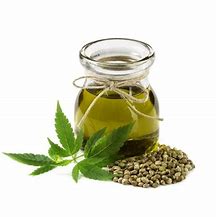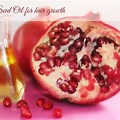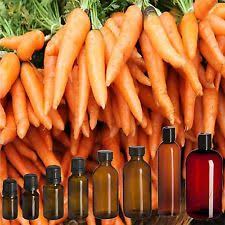Carrot Oil, Wild Carrot Oil (macerated)
-
Carrot Oil, Wild Carrot Oil (macerated)
- Latin Name
Dacus carota L. ssp sativus, D.carota ssp carot l,
D. communis Rouy and Camus
Family: Apiaceae (Umbelliferae)- Etymology
The flower head is distinctive and is known as Queen Anne's lace and is easily recognizable by a small black spot in the middle. Dacus is the Latin for carrot and the Greek is Karoton. - The Plant and its Environment
- Flemish refugees introduced the carrot into Britain during the reign of Elizabeth 1. The root crop we know so well was developed from Daucus carota ssp, sativus at the time.
- It is biennial and consists mainly of water (87%) along with red pigment, carotene (C40H56) in both the optically active alpha and inactive beta forms, sugars, pectins, lecithin, cellulose and other trace materials.
- Daucus carota ssp. sativus has an edible, fleshy orange tap root, while the wild carrot, or Queen Anne's lace D. carota ssp. carota has an inedible tough whitish root (Leung & Foster 1996)
- The OIl
The fruits (seeds) contain 0.5 - 1.6% of essential oil but the macerated oil is made from the root of the plant. - Method of Extraction (Maceration)
The production of macerated carrot oil requires expert attention. The root of the carrot is chopped up into small pieces and left to steep in a vegetable oil - usually sunflower oil - with some agitation, for about three weeks. - The material is then filtered to produce a clear orange coloured liquid known as carrot oil. Organic sunflower oil is frequently used as the medium for maceration.
- Folk-Lore and Traditional Plant Uses
Carrot juice is taken as a remedy for flatulence and stomach acidity. Carrot (root) oil has been approved for use as a food color; it is used mainly as a yellow coloring due to its carotene content. - Therapeutic Properties
True carrot oil is rich in beta - carotene, vitamins A, B, C, D, E, and F.
- Therapeutic Properties - External Use
- Tonic to the skin
Helps the healing process by assisting in the formation of scar tissue
Soothes itching skin
Claimed to be helpful in cases of psoriasis ad eczema
Cosmetic Use
It is said to be particularly good for the (ageing) neck due to its claimed reputation for delaying the ageing process. Carrot oil is used in some sun screen preparations and as a source beta-carotene and vitamin A (Leung & Foster 1996) - Cautionary Notes
The macerated oil is sometimes confused with the essential oil, which is obtained by steam distillation of carrot seeds and is quite different. - The essential oil is often used in cosmetics, in particular in suntan preparations.
- Carrot seeds and their essential oil promote the onset of menstrutation (Franchomme & Penoel 1990) and are to be avoided during pregnancy.
- The ingestion of carrots and carrot juice in excess can be toxic due to hypervitaminosis, as can excessive intake of tablets designed to 'tan' the skin artificially.
- In such cases, which are not at all uncommon, the palms of the hands and soles of the feet turn an orange color, the skin becomes progressively flaky, the whole system becomes toxic and in extreme cases death can result.
- Imitation Carrot Oils
There are other ways of producing 'carrot oil' and the resulting products may well have properties in common with the genuine artice. - These techniques include:
Adding carotene alone to a base oil without the use of carrots
The addition of some carrot based product obtained by solvent extraction
Adding beta-carotene obtained from tagetes.
The bases used for these are usually sunflower oil or soya bean oil.- A study (palan et al 1991) has shown that the antioxidants beta -carotene and Vitamin E function together in the prevention of cervical abnormalities and cervical cancer.
- The levels of beta-carotene and Vitamin E in the blood of 116 women were measured and it was shown that women with cervical dysplasia (precancerous cells) and cancer had low levels of both antioxidants.
- References: Palan P et al 1991 Plasma levels of antioxidant beta-carotene and alpha - tocepherol in utrine cervix dysplasia and cancer . Nutrition and cancer 15: 13-20
- Reference: Carrier Oils For Aromatherapy and Massage: Len Price et al.
Articles-Most Read
- Home
- Contact Us
- Coconut Oil-2
- Absorption Ratings for Carrier Oils
- Cold Pressing Method
- What are Essential Fatty Acids
- Cherry Kernel Oil
- Fixed Oils and Skin Penetration
- Hempseed Oil
- Almond Oil
- Cocoa butter
- Camelina Oil
- Coconut Oil
- Antibacterial Effects Of Carrier Oil
- Lime Blossom Oil (macerated)
- Carrot Oil, Wild Carrot Oil (macerated)
- Apricot Kernel Oil
- Kukui Nut Oil
- Jojoba Wax
- Pumkin Seed Oil - Cucurbita maxima, C. pepo
- Passion Flower OIl (Macerated)
- Hydrocotyle Oil (macerated)
- Rapeseed Oil - Carrier Oil
- Palm Kernel Oil
- Nutrients
Who's On Line
We have 89 guests and no members online
Articles-Latest
- How to Make Homemade Olive Oil: A Step-by-Step Guide
- 20 Evidence-Based Aloe Vera Oil Benefits For Skin, Hair & Health
- Peanut oil - Cold pressed - Are There Health Benefits? How To Make
- What Are the Health Benefits of Black Seed Oil?
- Comfrey oil Infused
- Chamomile Flowers Infused Oil
- Calendula Flowers Infused Oil
- Arnica Flowers Infused Oil
- How To Make Herb-Infused Oils
- DIY avocado oil for healthy skin
- How To Make Coconut Oil
- 8 Benefits of Mustard Oil, Plus How to Use It
- SHOREA STENOPTERA SEED BUTTER
- Shea Butter- 7 Amazing Benefits Of Shea Butter
- Monoi Oil For Hair & Skin
- Mango Seed Oil
- Cohune Oil Is The Next Big Thing
- Brazil Nut OIl
- 7 Impressive Benefits Of Allspice
- Camelina Oil Benefits, Uses, and Side Effects




